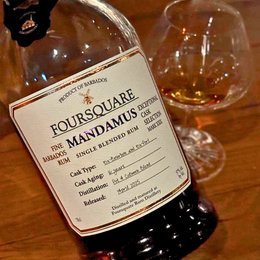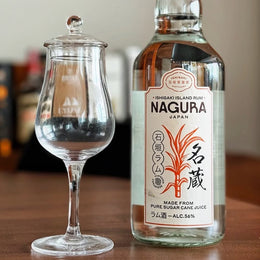
Background: what can we say about vintages in rum? In most regions of rum production, sugarcane is evergreen and can be harvested year-round. Barring catastrophic events to the crops, batch differences in the source material for rum production seem insignificant. On the other hand, the fermentation and distillation processes at many distilleries are sufficiently manual to introduce considerable “random” fluctuations to the distillate. Vintages can thus be a means to identify what is historically and statistically a good year (or batch) of distillate, which is half the battle towards identifying a good rum. For bourbon, we have got the 1984 Bernheim ryes, the 1993 Bernheim wheaters, and to a lesser extent (mostly due to sheer rarity) Stitzel-Weller wheaters from 1948 to 1952, to name a few legendary vintages. For rum, almost nothing comes close; the unicorns and ghosts belong squarely to the pantheon of very old Velier Demeraras, and those do not include repeated vintages -- so one can just as easily chalk their quality up to a few “honey barrels”. Of course, I used the word “almost” to indicate the presence of a few exceptions: the 1986 Rockleys, and the Hampdens from 1990 and 1993. What I am about to review is perhaps the oldest of the 1990 Hampden bottlings.
Nose: an explosion of exotic fruits from the get-go -- the fruits may recede into the background over time, but they never leave the picture; overripe papaya and mango; black banana; fresh passion-fruit and soursop; raw beef; slightly charred fatty pork satay; cempedak fritter; frying oil, so overused it is starting to go rancid; mixed nuts, both sugar-glazed and salted; milk powder; the pungent sweetness of the oldest hard cheeses; apple juice; white grape; sugarcane juice; old newspapers; decaying leaves and bare branches of trees, like the scent of autumn; essential oils like those of bergamot and camphor; the brine and salinity of the sea blending seamlessly with the must and greenness of the tropical rainforest; a synthesis of petrichor, mud pits of a mangrove swamp, and human flatulence; high-quality vegetable-tanned leather; plasticine wrapped in plastic film, over a flame; gasoline; wet burp; being on a rice paddy field; sweat-soaked clothes; all kinds of soured drinks, from gose to kvass to kombucha; salty liquorice; freshly roasted coffee beans; chocolate chip cookies; a pungent monstrosity of a meal comprising fried carbohydrates with heavy wok hei, smoked meats, canned and preserved fishes, all doused in Dijon mustard; the base notes are about as earthy as it gets -- damp soil, organic fertilisers, dried mushrooms, and of course, olive tapenade -- with a short excursion into the industrial (think diesel, tar and motor oil).
Palate: full, chewy and mouth-coating; honey-lemon candies; overripe tropical fruits; dried apricots and dates; shaoxing huadiao jiu and that crisp, green fragrance of rice in the field it harks me back to; gan cao, a fresh, sweet Chinese liquorice root, garnished with some fresh clippings; umeshu; hong zao, the lees of Chinese red yeast rice wine; moving into the mid-palate, it turns salty, savoury and earthy; vegetable juice with a dash of salt; potato chips with a light wasabi flavouring; Mamee noodle snack and its “chicken-flavoured” seasoning; ground almonds; muah chee; Shanghai sweet and sour pork ribs, its signature sauce combining black vinegar, soy sauce and sugar; coffee pork ribs, a local zi char creation; burnt ends; salted fish fried rice; anchovies, both fried and in brine; raw tuna marinated in its own dashi; air-fried shiitake mushroom chips; polymer clay being baked; that “smouldering landfill” note so pronounced in the NRJ TECA 2003; Chinese herbal chicken, boiled with goji berries, cordyceps and angelica root; sarsaparilla; salty liquorice; loads of hazelnut pralines; the back-palate is cognac-esque -- dried fruits, berry compote, candied orange and spearmint.
Finish: much of the front- and mid-palate repeats itself here, running the gamut of fruity, fermented, green, savoury and earthy notes; custard pudding; cheese crystals of hyper-aged hard cheeses, evoking memories of an unforgettable evening over which I sampled, among other delicacies, a 6-year-old Parmesan and an 8-year-old Gouda; grass in mud; tobacco; sandalwood incense; propolis; baklava; fresh sugarcane; roasted pistachio ice cream; the aftertaste at first reeks of starchy vegetables fried in rancid oil, olive tapenade, and dry manure in damp black soil; over the course of hours, this earthiness eventually makes way for sharper notes, like the metallic brine of fresh blood, Teochew steamed fish with ginger, sour plums and a garnish of Chinese parsley, a bittersweet mix of Chinese tonic herbs, tropical fruits marinated and stewed in a soup of mouldy bread and pencil shavings, as well as salted, pickled, and otherwise preserved vegetables on the verge of rotting.

Conclusion: magnificent, especially on the nose. If the notes of the John Barrett Hampden flow like water, then the notes here must be packed as dense as a metal block. This is a rare case where a rum’s monolithic appearance belies the complexity of its constitution, due to how compactly the constituents are structured. More than any other rum in my experience, it possesses a “gestalt” (to borrow one of Sku’s favourite descriptors) that elevates it far beyond the sum of its parts. And the clincher is, even without that, the complexity of the rum towers above all else I have tried. Truly in a class of its own.
Score (assuming a normal distribution with mean 50 and standard deviation 13 12): 96/100
EDIT: My last pour from the bottle, after letting that 30ml sit in the bottle for months, was darker and more brooding than all my previous pours. The rum has blossomed after being exposed to air all this while. It packed so much flavour that it overloaded my olfactory system -- I could only detect the fresher top notes of the John Barrett Hampden, and hardly anything from one of the best agricole rhums I have, right after nosing this. Even more impressive was the finish; the sustained intensity, the razor-sharp focus of each note, and the pacing of the peaks and troughs, were like nothing I had experienced from a glass. Quoting from my notes:
Finish: overripe tropical fruits and cream; sugary confectionaries; propolis; powdered milk; there is a sudden tonal shift towards to umami side; savoury Chinese herbs, red meat and animal fat, as in a double-boiled Chinese tonic soup with poultry and pork fat; earthy and industrial -- black soil, musty forest undergrowth, tar and engine grease; salty liquorice; fruit-peel-infused herbal liqueurs; it turns greener with freshly cut branches and clippings, as well as notes of waterlogged forest floor; the greenness branches into associations with various unripe tropical fruits; sugarcane juice; nuts and seeds, heavily roasted; more appetising is the combination of starch and oil and brine with the aforementioned nuts -- like a Foochow oyster cake with its deep-fried batter encrusted with salty roasted peanuts; then comes all kinds of fermented notes -- hard and washed-rind cheeses, sourdough, salted fish and vegetables, gherkin juice; the aftertaste comprises sea, fish and olive brine, wet rocks by the river, as well as "landfill" notes like melting plastic and rusty metal; the brine, the minerality and the metallic notes mix well to evoke the taste of fresh blood.
Image Courtesy of u/zoorado.
![]()
u/zoorado







